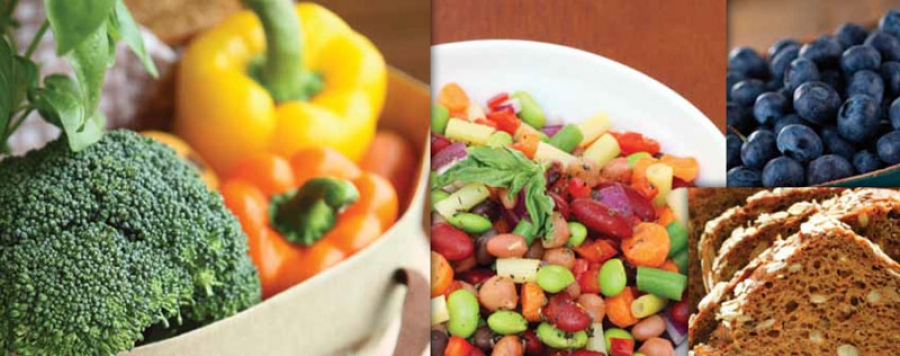The American Heart Association’s Nutrition Committee strongly advises these fat guidelines for healthy Americans over age 2:
- According to the 2010 Dietary Guidelines for Americans, you should eat between 20-35 % of your total daily calories as fats from foods like fish, nuts, and vegetable oils.
- Limiting the amount of saturated fats you eat to less than 7% of your total daily calories.
- Limiting the amount of trans fats to less than 1 percent of your total daily calories.
- For good health, the majority of fats you eat should be monounsaturated or polyunsaturated.

Acclaimed Heart and Vascular Center
We deliver excellent care with compassion after discussing your health and treatment plan with simplicity.
Types of fats
The Good Fats:
- Unsaturated fats - Unsaturated fats are mostly good guys—although trans-fat is technically an unsaturated fat. However, healthy unsaturated fats are liquid at room temperature, while trans and saturated fats are solid. To increase your unsaturated fat, replace solids, like butter, with olive and vegetable oils, and swap red meat for seafood or unsalted nuts.
- Polyunsaturated fats - You can find polyunsaturated fats in nuts, seeds, vegetable oils such as corn and safflower oil, and fatty fish. This category encompasses omega-3 and omega-6 fatty acids, which are known as essential fatty acids because our bodies don’t make them—we have to get them from food.
- Monounsaturated fats - Monounsaturated fats raise HDL (good cholesterol) and lower LDL. Canola oil, olive oil, peanut oil, nuts, seeds, and avocados are good sources.
- Omega-3 fatty acids - Omega-3s are the best fats that you can eat for your health. They fight inflammation, help control blood clotting, and lower blood pressure and triglycerides. Fatty fish like albacore tuna, salmon, mackerel, and sardines are good sources. Vegetable sources include soy, walnuts, and some vegetable oil.
The Bad Fats:
- Saturated fat - Saturated fat increases total cholesterol and LDL+, and may boost your type 2 diabetes risk+. Meat, seafood, and dairy products are sources of saturated fat. Some plant foods, like palm and coconut oil, also contain it.
- Trans-fat – Trans-fats are liquid oils filled with hydrogen so they stay solid at room temperature. They’re found in many processed and fried foods. Trans- fats increase total cholesterol and LDL, or bad cholesterol, and lower HDL, the good cholesterol. If you see the words hydrogenated, partially hydrogenated, or shortening, it contains trans-fat.
Good and Bad Fats
- Omega-6 fatty acids – This is an essential fatty acid that is necessary for optimal health but cannot be produced on its own by the body. Omega-6 fatty acids are very important to the brain to help strengthen its much-needed function through healthy growth and development.
Benefits:- Stimulates skin and hair growth
- Provides and maintains good bone health
- Helps regulate metabolism
- Keeps reproductive system healthy
- Helps reduce nerve pain
- Fights inflammation
- Treats Rheumatoid Arthritis
- May help reduce symptoms of ADHD
- Reduces High Blood Pressure
- Lowers Risk of Heart Disease
The problem is that the typical American diet tends to contain significantly more omega-6 fatty acids than omega-3 fatty acids, particularly because omega-6 is in a lot of unhealthy foods, such as salad dressings, potato chips, pizza, some pasta dishes and processed meats like sausage, to name a few. There should be a balance between the essential acids of both the omega-6 and omega-3s. The suggested ratio is around 2:1 omega-6 to omega-3.
Good Omega-6 Foods:
- Safflower
- Grapeseed
- Sunflower oil
- Poppy seed oil
- Corn oil
- Walnut oil
- Cottonseed oil
- Soybean oil
- Sesame oil
DISCLAIMER: THIS WEBSITE DOES NOT PROVIDE MEDICAL ADVICE
The information, including but not limited to, text, graphics, images and other material contained on this website are for informational purposes only. The purpose of this website is to promote broad consumer understanding and knowledge of various health topics. It is not intended to be a substitute for professional medical advice, diagnosis or treatment. Always seek the advice of your physician or other qualified health care provider with any questions you may have regarding a medical condition or treatment and before undertaking a new health care regimen, and never disregard professional medical advice or delay in seeking it because of something you have read on this website.
